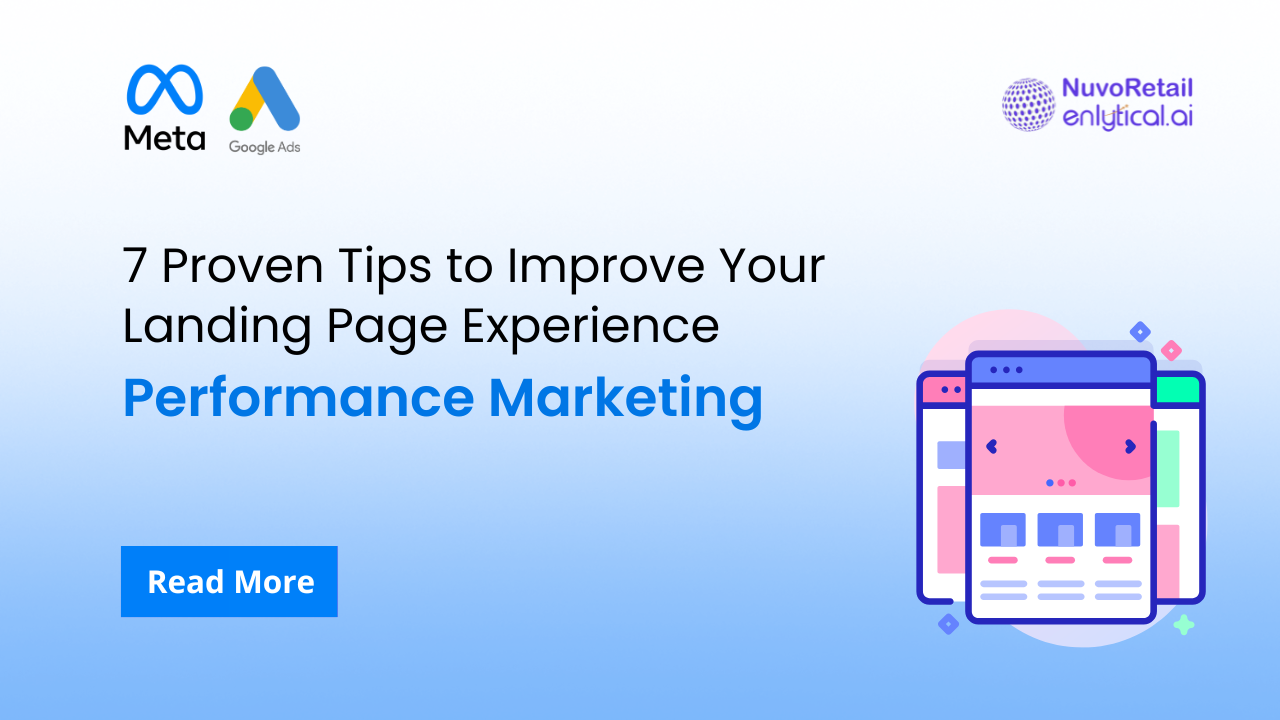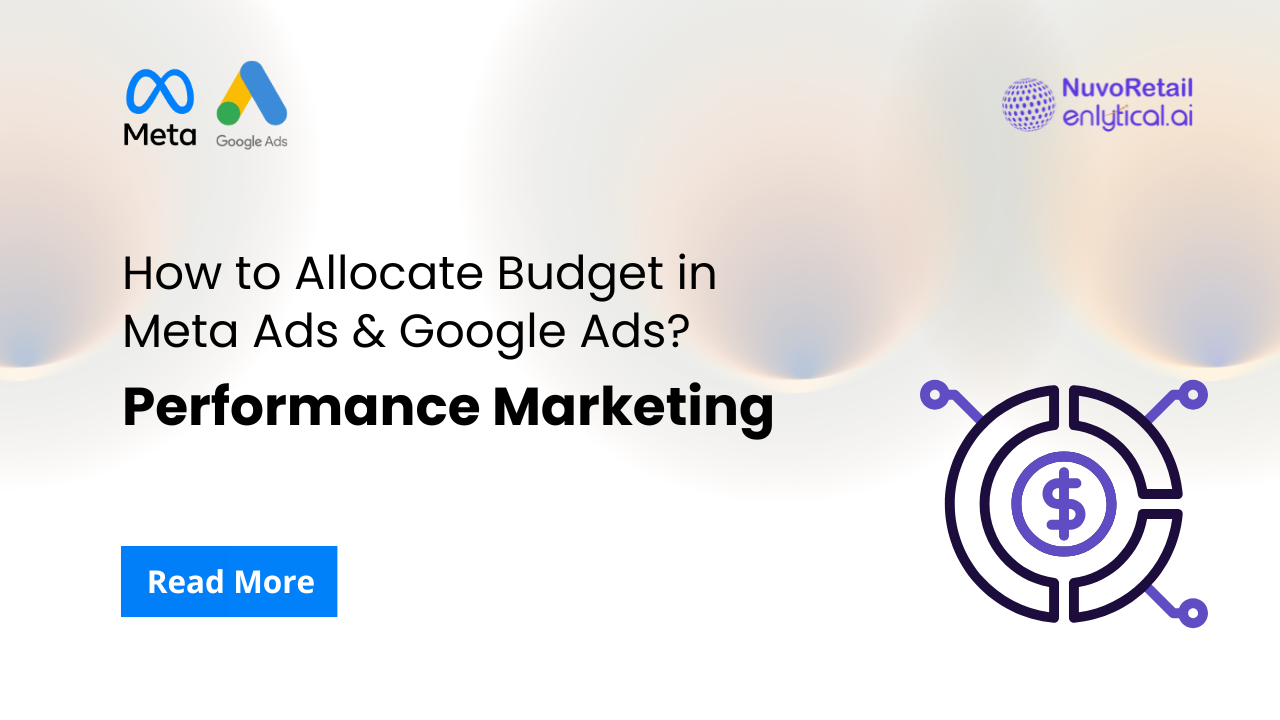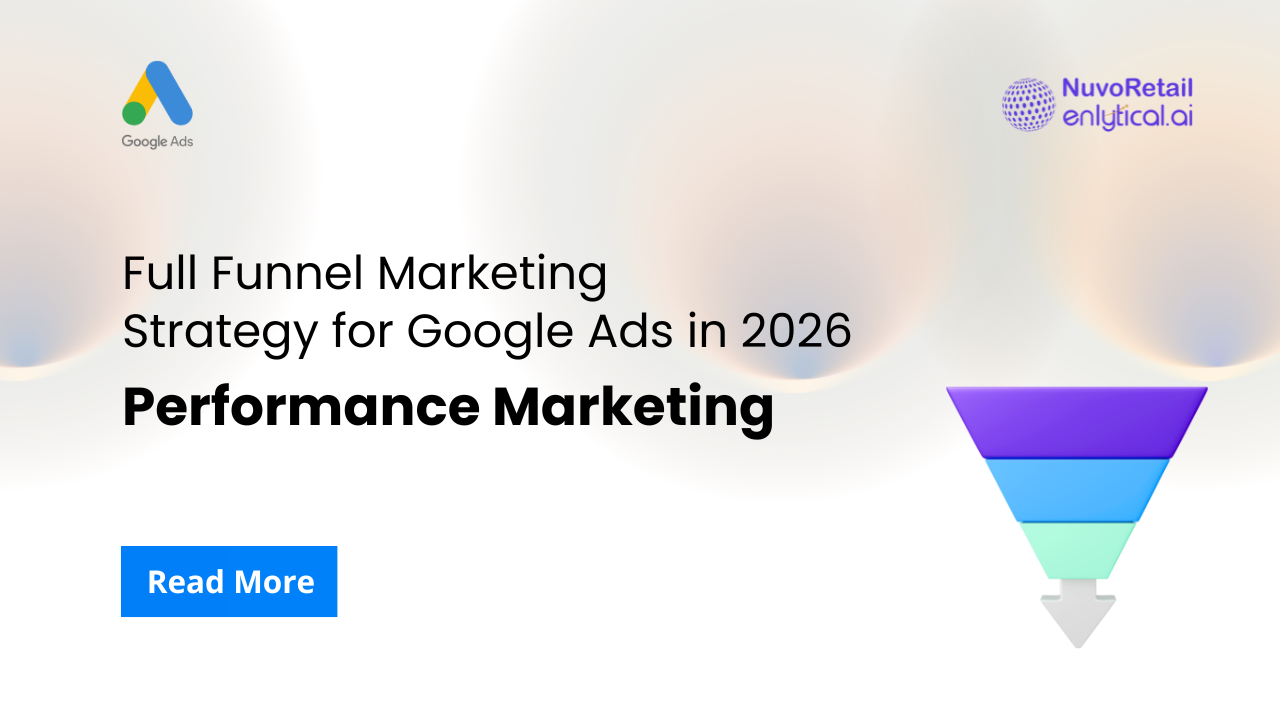Google Ads conversion tracking is the cornerstone of successful digital marketing campaigns. Without proper Google Ads conversion tracking mechanisms in place, you’re essentially flying blind—spending your advertising budget without truly understanding which ads drive results. Whether you’re running a small business or working with a digital marketing advertising agency, understanding how to set up and leverage Google Ads conversion tracking is essential for maximizing your return on investment and achieving measurable success.
At this stage, partnering with experts like NuvoRetail can make a significant difference. NuvoRetail’s performance marketing services help businesses not only set up accurate Google Ads conversion tracking but also interpret the data to uncover growth opportunities. By aligning tracking insights with campaign optimization, NuvoRetail ensures every marketing dollar contributes to measurable performance gains, higher ROI, and long-term scalability.
Table of Contents
- What is Google Ads Conversion Tracking?
- Why Conversion Tracking Matters for Your Business
- Step 1: Define Your Conversion Goals
- Step 2: Access Google Ads Conversion Actions
- Step 3: Create a New Conversion Action
- Step 4: Install the Conversion Tracking Tag
- Step 5: Verify Your Tracking Setup
- Step 6: Monitor Marketing Performance
- Step 7: Optimize Based on Conversion Data
- Advanced Conversion Tracking Strategies
- Common Conversion Tracking Mistakes to Avoid
- Conclusion
What is Google Ads Conversion Tracking?
Google Ads conversion tracking is a powerful tool that allows you to measure what happens after a customer clicks on your google ads. Whether it’s a purchase, sign-up, phone call, or app download, Google Ads conversion tracking helps you understand which campaigns, keywords, and ads are driving valuable customer actions. This data becomes the foundation for informed decision-making in your digital marketing strategy.
For businesses looking to advertise on google, conversion tracking transforms raw click data into actionable insights. A professional digital marketing agency uses this information to refine targeting, adjust bids, and allocate budgets more effectively across campaigns.
Why Conversion Tracking Matters for Your Business
Understanding marketing performance is crucial for any digital marketing company or in-house team. Here’s why Google Ads conversion tracking should be your top priority:
Measurable ROI: Track exactly how much revenue each campaign generates, allowing you to calculate precise return on ad spend (ROAS). This transparency is what separates successful performance marketing campaigns from those that waste budget.
Data-Driven Optimization: Without Google Ads conversion tracking data, you’re making decisions based on gut feelings rather than facts. Marketing metrics like conversion rate, cost per conversion, and conversion value guide your optimization efforts.
Budget Allocation: Identify which campaigns and keywords deliver the best results, enabling you to shift budget from underperforming areas to winning strategies. Any experienced google ads agency will tell you this is fundamental to campaign success.
Smart Bidding Strategies: Google’s automated bidding strategies like Target CPA and Target ROAS rely heavily on Google Ads conversion tracking data. Without proper tracking, these powerful tools can’t function effectively.
Step 1: Define Your Conversion Goals
Before diving into the technical Google Ads conversion tracking setup, clearly define what constitutes a valuable conversion for your business. Work with your marketing agency or internal team to identify:
Primary conversions might include purchases, lead form submissions, or phone calls. Secondary conversions could be newsletter sign-ups, product page views, or add-to-cart actions. Different businesses have different goals – an e-commerce store tracks sales differently than a business consulting firm that values consultation requests.
Consider the customer journey. Some conversions happen immediately, while others require multiple touchpoints. Your google ads campaign strategy should account for both micro and macro conversions to paint a complete picture of user behavior.
Step 2: Access Google Ads Conversion Actions
Setting up Google Ads conversion tracking begins in your google ad account. Here’s how to access the conversion actions area:
Log into your Google Ads account and click the tools icon in the upper right corner. Under the “Measurement” section, select “Conversions.” This is your Google Ads conversion tracking command center where you’ll manage all conversion actions.
If you’re working with an ads agency or google ads expert, they’ll typically handle this setup for you. However, understanding the Google Ads conversion tracking process helps you make informed decisions about your digital marketing services strategy.
According to Google’s official documentation, conversion tracking allows you to measure actions that customers take after interacting with your ads, providing invaluable insights for campaign optimization.
Step 3: Create a New Conversion Action
Click the blue plus button to create a new conversion action. Google Ads conversion tracking offers several conversion source options:
Website conversions track actions on your site like purchases or form submissions. App conversions measure in-app actions for mobile applications. Phone call conversions track calls generated from your ads, extensions, or website. Import conversions allow you to bring in offline conversion data or conversions tracked elsewhere.
For most businesses looking to advertise on google, website conversions are the most common starting point. Select your conversion source and follow the prompts to configure:
Conversion name: Choose something descriptive like “Purchase – Complete Checkout” or “Lead Form – Contact Submission.” Your advertising agency team will appreciate clear naming conventions.
Category: Select the category that best matches your conversion (purchase, sign-up, contact, etc.). This helps organize your marketing metrics.
Value: Assign a monetary value to conversions. E-commerce sites use actual transaction values, while lead generation businesses might assign an average lead value.
Count: Choose “Every” if each conversion has value (like purchases) or “One” if only the first conversion matters (like sign-ups).
Step 4: Install the Conversion Tracking Tag
The technical heart of Google Ads conversion tracking is the conversion tag—a snippet of code that fires when someone completes your desired action. Google Ads conversion tracking provides several installation methods:
Google Tag Manager (Recommended): The most flexible option that allows your digital marketing advertising agency to manage multiple tags without constantly editing website code. This approach streamlines tag management across your entire digital ecosystem.
Direct Website Installation: Add the global site tag and event snippet directly to your website’s HTML. The global tag goes on every page, while the event snippet goes only on your conversion page (like the thank-you page after a purchase).
CMS Platforms: If you use WordPress, Shopify, or similar platforms, Google Ads conversion tracking provides platform-specific instructions. Many digital marketing companies offer installation services if you’re not technically inclined.
For detailed technical guidance, refer to Google’s conversion tracking setup documentation, which provides step-by-step instructions for various scenarios.
Step 5: Verify Your Tracking Setup
After installing your Google Ads conversion tracking code, verification is crucial. A google ads expert always tests Google Ads conversion tracking thoroughly before launching campaigns. Here’s how:
Use Google Tag Assistant or the preview mode in Google Tag Manager to check if tags are firing correctly. Complete a test conversion on your website fill out a form, make a test purchase, or trigger whatever action you’re tracking. Usually within 24 hours, this test conversion should appear in your Google Ads account under the “Conversions” section though it can sometimes take longer.
Check the status column in your conversions dashboard. “Recording conversions” means your Google Ads conversion tracking works correctly, while “No recent conversions” might indicate an issue (or simply no conversions yet). “Unverified” status requires immediate attention from your digital marketing services team.
Google also provides a conversion tracking tool that helps businesses ensure proper setup and maximize campaign effectiveness.
Step 6: Monitor Marketing Performance
With Google Ads conversion tracking active, you can now monitor critical performance marketing metrics. Your google ads campaign dashboard becomes significantly more valuable with Google Ads conversion tracking data flowing in.
Key metrics to track include:
Conversion Rate: The percentage of clicks that result in conversions. Industry benchmarks vary, but any marketing agency will tell you this metric reveals ad relevance and landing page effectiveness.
Cost Per Conversion: How much you’re spending to acquire each conversion. Compare this against your customer lifetime value to ensure profitability.
Conversion Value: Total revenue or assigned value from conversions, essential for calculating ROAS.
Conversion by Campaign/Ad Group: Identify which elements of your google advertising strategy deliver results and which need optimization.
Regular monitoring of Google Ads conversion tracking data allows you to spot trends early and make adjustments before wasting significant budget. Partner with a specialized digital marketing company if you need help interpreting complex data patterns.
For more insights on essential metrics, check out this guide on performance marketing metrics that every marketer should track.
Step 7: Optimize Based on Conversion Data
The true power of Google Ads conversion tracking emerges when you use the data to optimize campaigns. Your google ads agency should be continuously refining strategy based on Google Ads conversion tracking insights.
Adjust Bids: Increase bids on keywords, locations, and devices that drive conversions. Decrease or pause elements that consume budget without results. This is fundamental performance marketing practice.
Refine Targeting: If certain demographics or audiences convert better, focus your targeting accordingly. Your advertising agency can create custom audiences based on conversion behavior.
Test Ad Creative: Run A/B testing experiments to identify which ad headlines, descriptions, and calls-to-action drive the highest conversion rates. Continuous testing is how top digital marketing agencies maintain competitive advantage.
Optimize Landing Pages: If you’re getting clicks but not conversions, your landing page needs work. Ensure message match between ads and landing pages, improve page speed, and simplify conversion processes.
Enable Smart Bidding: Once you’ve gathered at least ~30 conversions in 30 days, which is the industry-recommended threshold for stable Smart Bidding performance.
Advanced Conversion Tracking Strategies
Beyond basic setup, sophisticated Google Ads conversion tracking techniques can provide even deeper insights for your digital marketing advertising agency:
Enhanced Conversions: Use hashed customer data to improve Google Ads conversion tracking accuracy and unlock more precise bidding. This advanced feature helps overcome cookie limitations while maintaining privacy compliance.
Cross-Device Tracking: Understand how customers interact with your ads across multiple devices before converting. This holistic view is crucial for modern digital marketing strategies.
Offline Conversion Imports: Connect online ads to offline sales by importing conversion data from your CRM or point-of-sale system. Essential for businesses with both online and physical presences.
Attribution Modeling: Experiment with different attribution models to understand the full customer journey. Data-driven attribution uses machine learning to assign credit across touchpoints, providing sophisticated insights for business consulting and strategic planning.
Value Rules: Create dynamic value rules that assign different values based on specific criteria, enabling more nuanced ROAS optimization for your google ads campaign.
Common Conversion Tracking Mistakes to Avoid
Even experienced marketers sometimes make Google Ads conversion tracking errors that compromise data accuracy. Avoid these pitfalls:
Not Testing Properly: Failing to verify your Google Ads conversion tracking setup leads to missing or inaccurate data. Always test before launching campaigns, whether you’re working with an ads agency or managing in-house.
Double Tracking: Installing multiple conversion tags for the same action inflates conversion numbers and ruins your marketing metrics. Audit your tags regularly to prevent duplication.
Wrong Count Setting: Using “Every” instead of “One” (or vice versa) skews your conversion tracking data. E-commerce typically uses “Every” while lead generation uses “One.”
Ignoring Attribution Windows: Default attribution windows might not match your actual sales cycle. B2B companies often need longer windows than e-commerce stores.
Not Excluding Internal Traffic: Your own team’s test conversions contaminate data. Use IP exclusions or filters to maintain clean data for accurate marketing performance analysis.
Neglecting Privacy Compliance: Ensure your Google Ads conversion tracking implementation complies with GDPR, CCPA, and other privacy regulations. Non-compliance can result in serious legal consequences.
Conclusion
Google Ads conversion tracking is not optional – it’s the foundation of successful digital marketing campaigns. By following these seven proven steps, you transform raw advertising spend into measurable, optimized results that drive real business growth.
From defining conversion goals and installing tracking tags to monitoring marketing performance and continuously optimizing, each step builds upon the previous to create a comprehensive Google Ads conversion tracking system. Whether you’re managing campaigns independently or partnering with a digital marketing agency, proper Google Ads conversion tracking empowers data-driven decision-making that maximizes ROI.
The businesses that succeed with google advertising aren’t necessarily those with the biggest budgets—they’re the ones that track, measure, and optimize relentlessly based on Google Ads conversion tracking data. Start implementing these strategies today, and watch your campaign performance transform.
Maximize Your Google Ads Performance!
Don’t let valuable conversion data slip through the cracks. If you’re struggling with Google Ads conversion tracking or simply want to take your performance marketing to the next level, it’s time to partner with experts who specialize in turning clicks into measurable results.
That’s where NuvoRetail’s performance marketing services come in. Our team helps you implement advanced Google Ads conversion tracking strategies, optimize campaigns with real-time data, and maximize ROI so that every ad dollar counts.
Take the first step today: set up your Google Ads conversion tracking, or connect with NuvoRetail’s Google Ads experts who can ensure your tracking infrastructure is built for long-term success. Your future self and your bottom line will thank you.



